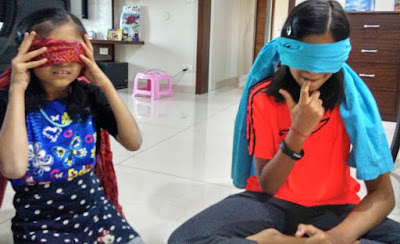Membranophone and other sound activities
Kids were given tasks to find out 1. Why animals such as rabbits, deer and fox have two long rotating ears? (rotates independently to hear sound from all directions). 2. How mammals such as whales and bats use their listening skills for echo location? Echo location Echo location is the use of sound waves and echoes to find the location of objects in space. Bats use this to navigate and find food in the dark. To echo locate, they produce sound waves through nose or mouth, which when hit by an object produces echoes. Bats listen to the echoes and figure out the shape, size and the location of the prey. Even dolphins use the same technique to find food and navigate in the dark. Dolphins produce high frequency clicks that quickly travel through water. In fact, sound waves travel five times faster in water than they do through air. After a healthy amount of interaction about animals, it was time to test it why we have two ears, and how it helps in our hearing. ...
